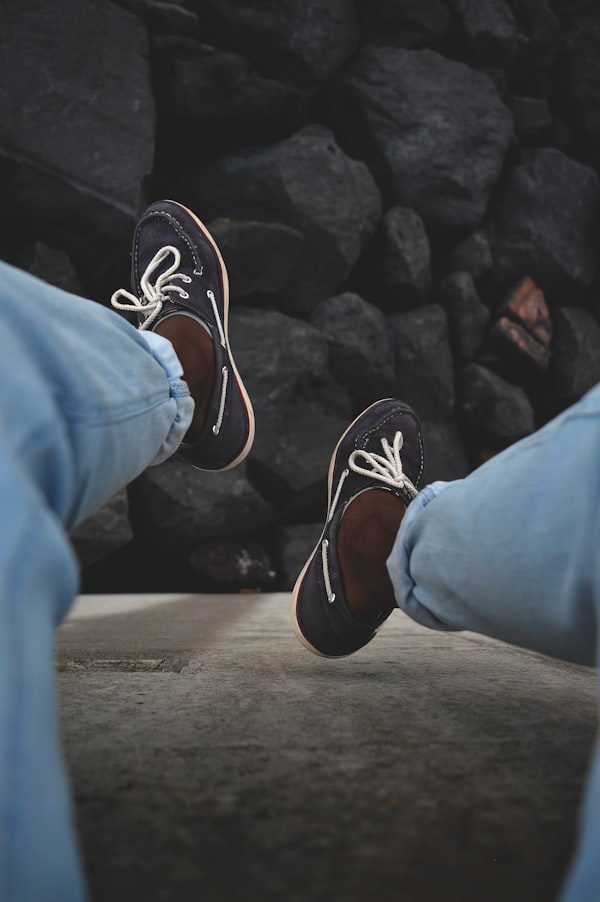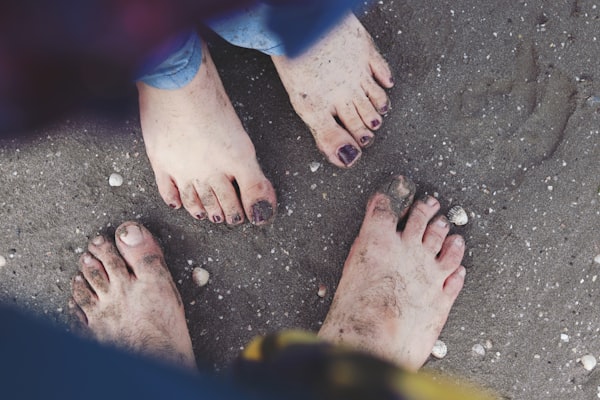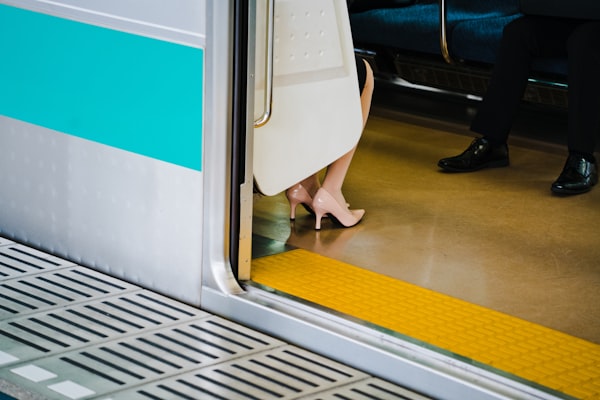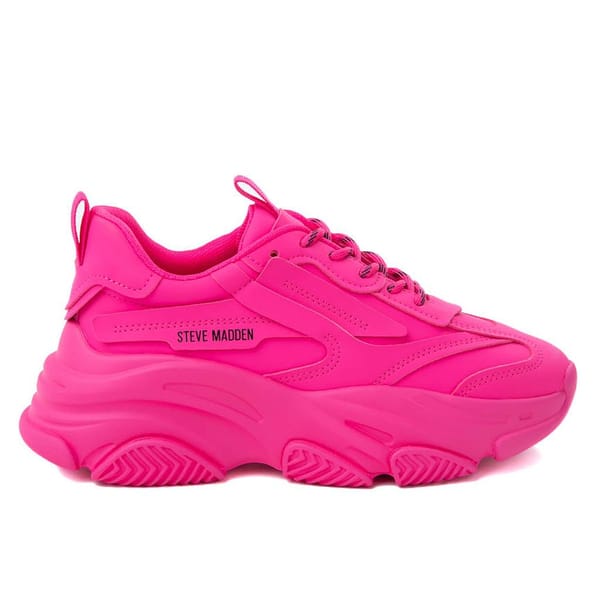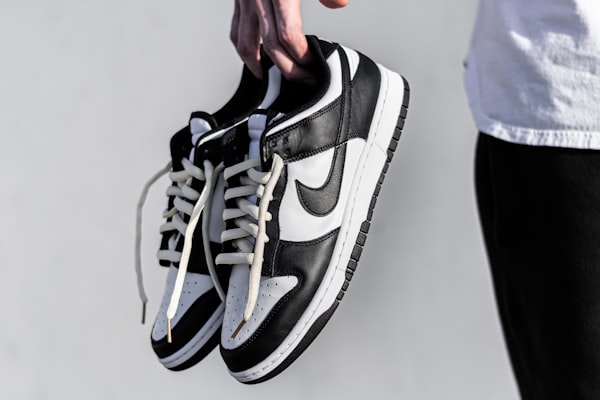Are your climbing shoes tighter than a snake's grip?
Breaking in climbing shoes can be a bit of a climb in itself, but trust us, the view from the top is worth it! A properly broken-in pair of climbing shoes can make all the difference in your performance and comfort.
Imagine being able to focus on the climb instead of constantly adjusting your shoes or dealing with foot pain. That's the power of a perfectly broken in pair of climbing shoes.
Today we'll take you on a journey to shoe heaven. We'll talk about why it's so important to break in climbing shoes, essential factors to consider, and common pitfalls to avoid, and give you tips to make the break-in process a breeze. So, strap on your climbing shoes, and let's get started!
The Importance of Breaking in Climbing Shoes
Breaking in climbing shoes is essential in ensuring you have a comfortable and supportive experience while climbing. The process of breaking in helps mold the shoes to the shape of your feet, improving the fit and comfort of the shoes.
When the shoes fit well, they provide the right amount of support, which can help to prevent foot fatigue and reduce the risk of blisters and calluses. Properly broken-in shoes also give you a better feel for the rock, giving you more control and grip when climbing. This improved grip and control can help you to perform at a higher level and be more confident on the wall.
Breaking in climbing shoes is not a one-time event, either. Over time, the shoes will stretch and deform as you wear them, so it's essential to continue to break them in regularly to ensure they provide the right level of comfort and support.
Overall, taking the time to break in your climbing shoes properly is a crucial step in the climbing process that will benefit you in the short and long term.
Factors to Consider when Breaking in Climbing Shoes
Breaking in climbing shoes can be a complex process, and you must consider several factors to ensure you do it correctly. But, the perfect fit allows you to focus on the climb instead of constantly adjusting your shoes or dealing with foot pain. It's not all about reaching the summit; it's also about enjoying the climb.
Here are the eight factors you need to consider when breaking in your climbing shoes to help you achieve the best possible fit and comfort.
1. Material
The type of material used in climbing shoes can significantly impact the break-in process. Different materials offer different levels of stiffness and flexibility, affecting how quickly the shoes break in and how they perform on the wall.
For example, leather shoes tend to be more flexible and break in faster, but they may not offer the same support as synthetic shoes. On the other hand, synthetic shoes are often stiffer and take longer to break in, but they provide better support and can last longer than leather shoes.
It's essential to consider the type of material used in the shoes, how it will impact the break-in process, and your overall climbing performance. Additionally, some materials may require different break-in techniques, such as heat or stretching exercises, to achieve the best results.
2. Foot Shape
The shape of your feet is another critical factor to consider when breaking in climbing shoes. Different feet shapes require different breaking techniques to achieve the best fit and comfort.
For example, those with wider feet may need to break in their shoes differently than those with narrow feet. The same goes for those with high arches or flat feet, as each foot shape requires different levels of support and stability.
Breaking in the shoes to fit the shape of your feet is vital to ensure a comfortable climbing experience and prevent foot fatigue and the formation of blisters or calluses. We recommend you try on multiple brands and models of shoes to find the best fit for your foot shape and to consider the condition of your feet when breaking in the shoes. Adjusting the tightness of the shoes or using specific techniques, such as stretching or massaging the shoes, will help them mold to the shape of your feet.
3. Tightness
The tightness of climbing shoes is critical to consider when breaking them in. Shoes that are too tight can cause discomfort and even injury, while shoes that are too loose can result in slipping and poor performance. Therefore, finding the right balance of tightness is critical to ensure that the shoes are snug and comfortable but not too tight. The best way to achieve this balance is by breaking in the shoes gradually. Allowing shoes to adjust to the shape of your feet and your feet to adjust to the shoes will help you avoid causing discomfort or injury.
When breaking in climbing shoes, starting with a tighter fit and gradually loosening them over time is recommended. You can speed up the process by wearing the shoes for short periods, gradually increasing the duration as the shoes break in. However, to prevent discomfort or injury, you should avoid wearing the shoes for extended periods, especially during the first few days of the break-in process.
Additionally, paying attention to how your feet feel in the shoes and making adjustments as needed to achieve the best fit and comfort is essential. Breaking in climbing shoes gradually and carefully can help ensure a comfortable and successful climbing experience.
4. Use
The frequency and intensity of use is another critical factor to consider when breaking in climbing shoes. The more you use the shoes, the faster they will break in. However, it's essential to approach the break-in process gradually to avoid discomfort or injury. Using the shoes for short periods and progressively increasing the duration can help the shoes adjust to the shape of your feet, and vice versa, without causing any discomfort. We recommend you start by wearing the shoes for short periods, such as 10-15 minutes, and gradually increasing the duration as the shoes break in.
Additionally, it's essential to consider the intensity of use when breaking in the shoes. For example, if you're a beginner climber, it's recommended to start with low-intensity climbs and gradually increase the intensity as the shoes break in. Starting with low intensity can help prevent injury or discomfort and ensure the shoes break in properly.
Breaking in climbing shoes can take time and patience, but it's worth the effort to ensure a comfortable and successful climbing experience. By considering the frequency and intensity of use and approaching the break-in process gradually, you can help to ensure that your shoes are ready for any climb, no matter how challenging.
5. Alternating Shoes
Alternating between two pairs of climbing shoes can be an effective way to extend the life of both pairs and prevent overuse or excessive wear and tear. It's important to remember that they are designed to be worn for short periods and should not be worn continuously for extended periods. Excessive use can wear shoes down quickly.
By alternating between two pairs of climbing shoes, you can help extend the life of both pairs and prevent overuse or excessive wear and tear. For example, you could use one pair of shoes for indoor climbing and another for outdoor climbing. The key is to ensure that both pairs of shoes are used appropriately and not subjected to excessive wear and tear.
Additionally, alternating between two pairs of shoes can help ensure that the shoes break in properly and evenly. Switching between the two pairs allows each pair of shoes to rest and recover, which can help prevent excessive wear and tear and ensure that both pairs are breaking in properly.
Alternating between two pairs of climbing shoes can be an effective way to extend the life of both pairs and prevent overuse or excessive wear and tear. By considering this factor and approaching the break-in process gradually, you can help ensure your climbing shoes are comfortable, effective, and ready for any climb.
6. Socks
The type of socks you wear when breaking in climbing shoes can also impact the break-in process. Wearing thin or no socks can help break in the shoes faster, allowing the shoes to mold to the shape of your feet more quickly. This can help to ensure that the shoes fit snugly and provide adequate support for climbing.
However, it's essential to be cautious when wearing thin or no socks, as this can also increase the risk of blisters and other foot irritations. In addition, climbing shoes are often tight-fitting and may cause friction and pressure on the feet, especially when worn without socks. This can result in blisters, calluses, and other foot irritations, making climbing uncomfortable and even painful.
It's essential to use appropriate socks and ensure that the shoes fit comfortably and snugly. For example, you could wear thin socks made of synthetic materials that wick away moisture and prevent blisters, or you could opt for padded socks that provide additional cushioning and support.
Wearing thin or no socks can help to break in climbing shoes faster, but it's important to be cautious and to consider the potential for blisters and other foot irritations. By using appropriate socks and ensuring that the shoes fit comfortably and snugly, you can help ensure that the break-in process is successful and that you're ready for any climb.
7. Stretching
Stretching the shoes in different directions and using a shoe-stretching device can be effective tools in the breaking-in process of climbing shoes. In addition, these methods can help gradually loosen up the shoes and make them more comfortable.
By stretching the shoes in different directions, you can help to loosen up the material and make it more flexible, allowing it to mold quickly to the shape of your feet. Do this by hand, pulling the shoes in different directions or using a shoe-stretching device, which can apply more controlled pressure to specific areas of the shoes.
Using a shoe-stretching device can be especially useful if you have specific areas of discomfort or if your feet are wider or have different shapes that make it difficult for your shoes to fit comfortably. By stretching the shoes, you can help to ensure that they fit snugly and comfortably, reducing the risk of blisters, calluses, and other foot irritations that can make climbing uncomfortable or even painful.
Stretching the shoes in different directions and using a shoe-stretching device can be effective tools in the breaking-in process of climbing shoes. Using these methods, you can help make your shoes more comfortable and ensure they fit snugly and securely, allowing you to enjoy climbing and making the most of your gear.
8. Care and Maintenance
Regular care and maintenance are essential to breaking in climbing shoes and keeping them in good condition. Proper care and maintenance can help extend your shoes' life, reduce the risk of wear and tear, and keep them comfortable for use.
Regularly cleaning your climbing shoes can help to remove dirt, grime, and other debris that can accumulate in the shoes and cause wear and tear. Use a gentle cleaning solution, and allow the shoes to air dry thoroughly after cleaning to avoid any damage from moisture.

Air drying your shoes is also vital for preventing the growth of bacteria and fungi, which can cause odors and potentially damage the shoes. In addition, avoiding direct heat and sunlight and allowing the shoes to air dry in a well-ventilated area can help to preserve their condition and extend their life.

In addition to cleaning and air drying, conditioning your shoes can help to keep the material supple and prevent it from drying out or cracking. Using a leather conditioner or a similar product can help to keep the shoes in good condition, and regular conditioning can also help to extend their life.

Regular care and maintenance are crucial to breaking in climbing shoes and keeping them in good condition. By taking the time to clean, air dry, and condition your shoes, you can help to extend their life and keep them comfortable for use, allowing you to enjoy climbing for years to come.
As you can see, breaking in climbing shoes is not a one-size-fits-all process. It's essential to take the time to consider the factors that are specific to your needs and situation. By considering the factors outlined above, you can ensure that you are correctly breaking in your climbing shoes, which will help you achieve the best possible fit and comfort for your feet. And as a result, you will be able to perform at a higher level and enjoy a more comfortable climbing experience.
Common Pitfalls to Avoid when Breaking in Climbing Shoes
Breaking in climbing shoes can be an exciting process, but it can also be challenging and require patience and dedication. Despite the many benefits of breaking in climbing shoes, it is essential to be aware of the common pitfalls that can arise during the process.The four pitfalls to avoid are:
1. Overuse
One of the most common pitfalls when breaking in climbing shoes is overuse. Overuse occurs when people use their climbing shoes too much or too often before they are broken in, causing discomfort, injury, and even damage to the shoes. Unfortunately, overuse can also make it difficult to properly break in the shoes, leading to a long, drawn-out process that never fully achieves the desired level of comfort and performance.
To avoid overuse, it is crucial to start using the shoes for short periods, gradually increasing the duration as they become more comfortable. Additionally, alternating between two pairs of shoes can help extend life and prevent excessive wear and tear.
It is also essential to pay close attention to the feel of the shoes and listen to your feet. If you start to feel discomfort or pain, take a break and allow your feet to recover.
2. Over-Tightening
Another common pitfall when breaking in climbing shoes is over-tightening. Over-tightening occurs when people lace their shoes too tightly, causing discomfort, injury, and even damage to the feet and shoes. Over-tightening can also make it difficult to properly break in the shoes, leading to a long, drawn-out process that never fully achieves the desired level of comfort and performance.
To avoid over-tightening, starting by lacing the shoes snugly but comfortably is essential. You should be able to wiggle your toes without spare room in the shoes. Gradually tighten the shoes as they break in and adjust to your feet. It is also essential to pay close attention to the feel of the shoes and listen to your feet. If you start to feel discomfort or pain, loosen the shoes and allow your feet to recover.
3. Ignoring Foot Discomfort
Ignoring foot discomfort is another common pitfall when breaking in climbing shoes. As the shoes are adjusted to fit the feet, it is not uncommon for people to experience discomfort or even pain. However, it is essential not to ignore these feelings and to pay close attention to what your feet tell you.
If the shoes are causing discomfort, it is important to loosen them or take a break and let your feet recover. Ignoring foot discomfort can lead to injury, blisters, and other foot problems that can impact your climbing performance and even prevent you from climbing altogether.
Additionally, ignoring discomfort can prolong the breaking-in process, making adjusting to your new shoes more difficult and less enjoyable. Therefore, listening to your feet, taking breaks when necessary, and adjusting the shoes to ensure they fit comfortably and provide the support you need to climb to your full potential is crucial.
4. Skipping Care and Maintenance
Skipping care and maintenance is another pitfall to avoid when breaking in climbing shoes. Proper care and maintenance are essential to ensuring that the shoes last as long as possible and perform at their best. Neglecting to clean, air out, and condition the shoes can lead to a build-up of sweat and bacteria, which can cause odors and even break down the materials used in the shoes, reducing their lifespan.

Additionally, skipping care and maintenance can make the shoes more difficult to break in, as they may become stiff and unyielding, making it uncomfortable to wear them for extended periods.
Investing in regular care and maintenance is crucial, such as cleaning and conditioning the shoes, airing them out after use, and storing them in a cool, dry place when not in use. This will help keep the shoes in good condition and ensure they last as long as possible, making them more comfortable to wear and easier to break in.

Avoiding these common pitfalls ensures the breaking-in process is smooth, comfortable, and successful. With the right approach and proper care, you can break in your climbing shoes and enjoy the many benefits of having shoes that fit your feet perfectly. Whether you are a seasoned climber or just starting out, being aware of the common pitfalls and avoiding them can help you achieve your climbing goals and reach new heights. So take your time, be patient, and enjoy the process of breaking in your climbing shoes!
Tips from Our Editors
- The best way to break in climbing shoes is to use them for climbing. The more you climb in them, the more they will conform to your feet.
- Breaking in climbing shoes can take time and effort, so be patient and keep at it until you have a comfortable and properly fitting pair of shoes.
On a Final Note
Breaking in climbing shoes is a crucial step in the climbing process that shouldn't be underestimated.
You can turn those stiff and uncomfortable shoes into your trusty climbing companions with the right approach.
Remember, breaking in climbing shoes is a slow and steady process, but you'll reach the summit with time, effort, and patience. So, lace up, take a deep breath, and soon you'll enjoy the view from the top!
Related Articles




